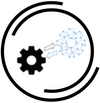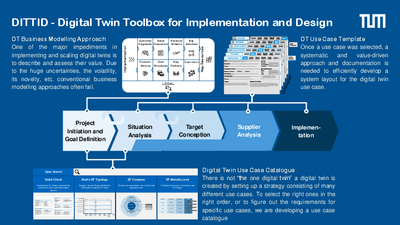Keywords
Digital Twin, Digitized Engineering, Data-Driven Engineering, Big Data, Industry 4.0, Smart Factory, Simulations
Problem
In an increasingly globalized and digitalized world with fast-paced trends, a pluralization of lifestyles, and a growing competition in the markets, it is essential for companies to develop cost- and time-efficiently and especially customer-oriented to ensure the success of their products. Due to the increasing digitalization of nowadays products, more and more virtual models of different types exist besides the physical product. In addition, their ever larger amounts of data are often highly networked and in turn create connections with other products or their models. In all phases of the product life cycle from development to production, use, and disposal, more and more data is generated that enriches the virtual images of a product.
Goal
A so-called Digital Twin can be used to exploit the potential of this data. In our definition, a Digital Twin is a virtual, dynamic image of a physical system that is connected to it over the entire lifecycle for bidirectional data exchange. This ensures a constant, consistent correspondence between the real behavior of physical products and the virtual images. Digital Twins can be used along the entire product life cycle and in various use cases to effectively and efficiently unlock the "data treasure".
Approach
The Laboratory for Product Development and Lightweight Structures developed a consistent definition for digital twins. In an 18-month industrial cooperation, a procedure model for the conception and implementation of Digital Twins was developed. This model will now be applied and extended in further projects. Moreover, in addition to the implementation of digital twins, their use is increasingly emphasized. In particular, the potential of data-based and data-driven product development shall be researched. The linkage with other development methods currently being researched at the LPL is also to be established. For example, it will be investigated how a Digital Twin can be used in practice to derive load models for Solution Space Engineering based on usage data.

